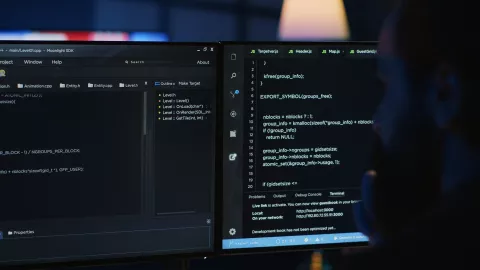Tracking Work Items Without Losing Focus on the Big Picture

In modern project management, details matter — but so does the bigger vision. Project managers often struggle with a common challenge: how do you track every task without losing sight of the overall project goals?
Too much focus on micro-tasks can create tunnel vision, while overlooking details can lead to missed deadlines and bottlenecks. The key lies in balancing work item tracking with a clear view of the strategic objectives.
Why Work Item Tracking Matters
Every project is made up of countless moving parts: tasks, deliverables, deadlines, and dependencies. Tracking these work items is essential for:
- Accountability → Everyone knows what they’re responsible for.
- Progress visibility → Managers and stakeholders can see what’s done and what’s pending.
- Risk detection → Potential delays become visible before they impact the timeline.
- Productivity → Teams stay organized and avoid duplicated work.
Without this level of tracking, projects quickly fall into chaos.
The Risk of Getting Lost in the Details
However, there’s a danger in focusing solely on individual tasks. If project managers and teams obsess over small items, they risk:
- Losing alignment with the original goals,
- Prioritizing “busy work” over strategic tasks,
- Creating stress by micromanaging every detail,
- Failing to communicate progress to executives or clients at a high level.
That’s why successful project management requires a dual focus: detail-oriented tracking and big-picture alignment.
Balancing Detail and Strategy
So how can teams track granular work items while ensuring they never lose sight of the bigger picture?
1. Use Hierarchical Task Structures
Break projects down into milestones → tasks → subtasks. This way, each item is tied to a broader goal, making it clear how small contributions drive big results.
2. Connect Tasks to Outcomes
When assigning or reviewing tasks, explain not just what needs to be done, but why. Context helps team members see how their work impacts the overall project.
3. Leverage Dashboards and Reports
Visual dashboards provide both detail and overview. Team members can zoom into their specific tasks, while managers can view overall progress, budgets, and KPIs at a glance.
4. Set Clear Priorities
Not all tasks are equal. By ranking work items in terms of importance, teams focus energy on what contributes most to project success.
5. Encourage Regular Alignment Meetings
Weekly check-ins should include both task updates and discussions about overall project goals. This prevents teams from drifting into detail without direction.
How Bizon360 Projects Helps
Bizon360 Projects is designed to support both levels of focus:
- Work item tracking with tasks, subtasks, dependencies, and deadlines.
- Project-level views like Gantt charts and Kanban boards to show how tasks fit into the bigger timeline.
- Dashboards that combine granular updates with high-level KPIs.
- Collaboration tools that keep everyone on the same page, from team members to stakeholders.
With these tools, teams no longer have to choose between detail and strategy — they get both.
Tracking work items without losing sight of the big picture is the hallmark of effective project management. It ensures that no detail is missed, while also keeping energy focused on achieving the ultimate project goals.
The secret isn’t choosing between detail and vision — it’s integrating both into your workflows. With platforms like Bizon360 Projects, managers and teams can zoom in when needed and zoom out when it matters, ensuring projects stay both precise and purposeful.
- Log in to post comments


